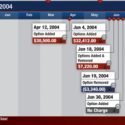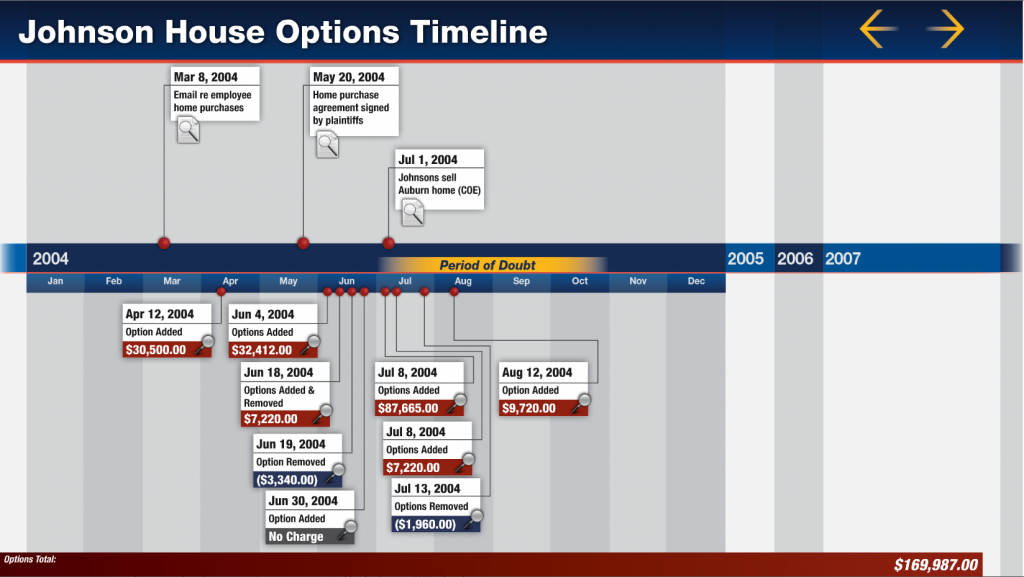 Timelines are probably one of the most common things we create at Cogent Legal for clients in all types of cases. Employment, business and personal injury cases are ideally suited for laying out the facts in chronological order to enhance jury understanding. When discussing the various options of timelines with clients, there are basically two main types to consider: Static and Interactive.
Timelines are probably one of the most common things we create at Cogent Legal for clients in all types of cases. Employment, business and personal injury cases are ideally suited for laying out the facts in chronological order to enhance jury understanding. When discussing the various options of timelines with clients, there are basically two main types to consider: Static and Interactive.
A static timeline can be done on a blow-up board and shown to the jury during any key moment of the case. The downside of a static timeline is that, unless it is really simple with only a few entries, you risk overwhelming the audience with so much information at once that it can be hard for them to understand.
For this reason, we generally recommend attorneys start with an interactive timeline that shows events one at a time so that the jury focuses on a single point as the attorney makes it. The interactive format also allows for document treatments so you can choose a button to reveal key documents that relate to the timeline entry. The following example is from a case (where all the names and dates were modified), and it shows the strong functionality possible with the interactive format. My clients realized that when we finished the timeline with all the dates, entries and documents, not only did they have an engaging, effective tool to present their case; they also had their entire opening statement finished! They could simply go through each entry with the jury in opening and discuss the issues.
Click the screen shot below, and it will open a separate window to view the interactive Flash timeline. As you click the arrows at the top right-hand corner, you will notice certain entries have a magnifying glass icon. Be sure to click on these, too, to open additional information on that entry, such as document call-outs.
This sample case arises out of a real estate dispute where it was alleged that a buyer of property continued to add numerous expensive extra items to the house he was purchasing, and then tried to back out of the deal after they were built. The bar at the bottom tracked the total cost of upgrades as time went on.
The good thing about this is, it’s built in Flash. The bad thing about it is, it’s built in Flash. What does this mean? Adobe’s Flash allows for unlimited creativity and interactivity—which is great. But, it’s not supported by Apple, so it won’t play on iPads or iPhones—which is frustrating. Therefore, I ask that you view this on your Flash-enabled desktop or device.

This sample is a great example of the flexibility that a well-designed timeline can give a litigator in most any business, employment, real estate or other case.
If you would like more information on how a timeline can help your case, please do not hesitate to contact me.
If you’d like to receive updates from this blog, please click to subscribe by email.

